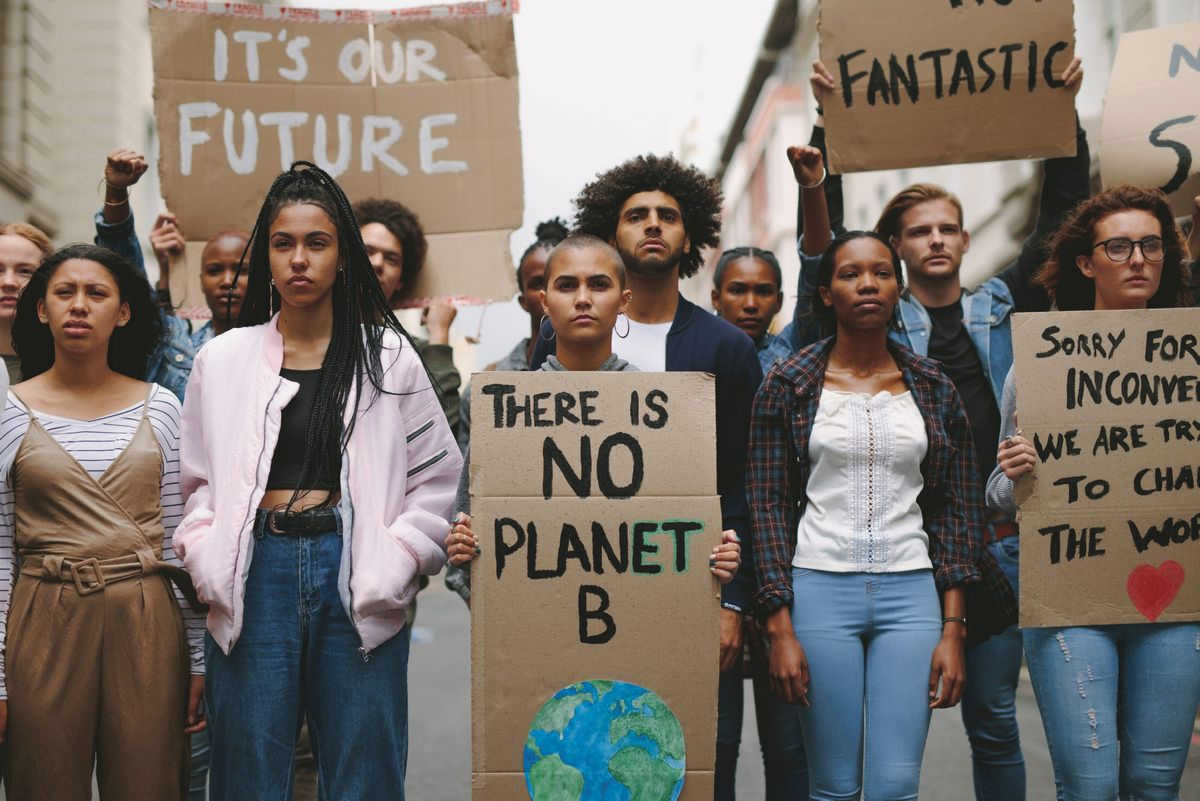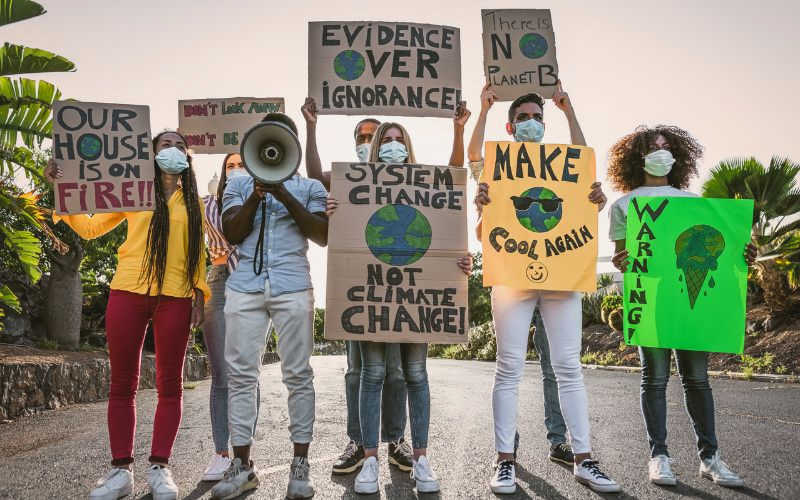Environmental activism has proven to be a formidable force in driving significant change around the world. Through the collective efforts of passionate individuals and organizations, environmental activism has succeeded in raising awareness, influencing policy decisions, and pushing for sustainable practices. This powerful movement has demonstrated the ability to truly make a difference and shape the future of our planet.
One of the notable strengths of environmental activism lies in its ability to unite people from different backgrounds and interests. Whether it is through protests, petitions, or social media campaigns, individuals from all walks of life can come together under a common goal: protecting and preserving the environment. This collective action brings together a diverse range of voices, amplifying the message and increasing the likelihood of achieving real, lasting change.
Furthermore, environmental activism has the power to hold governments and corporations accountable for their actions. Through public pressure and advocacy, activists have been able to challenge destructive practices, such as deforestation, pollution, and excessive resource extraction. By creating public awareness and engagement, activists can force decision-makers to prioritize sustainability and implement measures to protect the environment.
The impact of environmental activism is not limited to specific localities or nations. In fact, it has become a global movement, with activists collaborating across borders to tackle global environmental challenges. International conferences, such as the United Nations Climate Change Conferences, bring together activists, scientists, and policymakers from around the world to address the urgent need for collective action in combating climate change. This global exchange of ideas and collaboration is essential for developing effective strategies and solutions to environmental problems.
The Power of Collective Action
The power of collective action cannot be underestimated when it comes to creating change in the world, particularly when it comes to environmental activism. When individuals come together with a shared goal and a united voice, they have the ability to make a significant impact on the world around them.
Collective action allows for the pooling of resources, knowledge, and expertise to address complex environmental issues. By working together, activists can leverage their combined efforts to effectively advocate for change.
One key strength of collective action is its ability to amplify the message of environmental activists. When a group speaks with a unified voice, it is much more likely to be heard and taken seriously by governments, corporations, and the general public. This can lead to increased awareness and action on critical environmental issues.
Collective action also provides a sense of community and support for activists. It can be empowering to know that you are not alone in your passion for the environment and that there are others who share your goals and values.
Another important aspect of collective action is its ability to bring about systemic change. Through collective action, activists can challenge existing structures and policies that contribute to environmental degradation. By advocating for policy reform and holding decision-makers accountable, collective action can help create a more sustainable and environmentally conscious society.

Collective action can take many forms, from grassroots movements to international campaigns. It can involve protests, petitions, lobbying efforts, and public awareness campaigns. Whatever form it takes, the power of collective action lies in its ability to mobilize people and create a unified movement towards a shared environmental goal.

In conclusion, collective action is a powerful force for change in the realm of environmental activism. By bringing people together, amplifying their voices, providing support, and challenging existing systems, collective action has the potential to make a lasting impact on the health of our planet.
Environmental Activism
Environmental activism is a powerful collective force that seeks to address and combat environmental issues. Through the efforts of dedicated activists and organizations, environmental activism aims to raise awareness, advocate for change, and protect the natural world for future generations.
In recent years, environmental activism has gained significant momentum as concerns over climate change, deforestation, pollution, and species extinction have grown. Activists are utilizing various strategies to effect change, including public demonstrations, lobbying, grassroots organizing, and legal action.
Role of Environmental Activists
Environmental activists play a crucial role in shaping public opinion and influencing policy decisions. They are often at the forefront of raising awareness about environmental issues and pressing for sustainable solutions. By organizing protests, marches, and other events, activists draw attention to the urgency of addressing environmental challenges.
Furthermore, environmental activists engage in educational efforts, conducting research, and disseminating information to inform the public about the consequences of inaction and the benefits of environmental stewardship.

Collaboration and Impact
Environmental activism is most effective when individuals and organizations come together to form a united front. By collaborating with like-minded groups, activists can pool their resources, knowledge, and influence to create lasting change.
Through collective action, environmental activists have achieved significant victories, such as the banning of harmful chemicals, the protection of endangered species, the conservation of natural habitats, and the promotion of renewable energy sources.
However, the work of environmental activism is never complete. As new challenges emerge and the fight for a sustainable future continues, activists must remain vigilant and dedicated to their cause.
Promoting Change
In order to bring about significant change and address environmental issues, it is essential to promote collective action. This can be achieved through various strategies and initiatives that raise awareness, mobilize communities, and empower individuals.
Education and Awareness
One of the key ways to promote change is through education and raising awareness about environmental issues. By providing information and knowledge about the impact of human activities on the planet, individuals can be empowered to take action and make more informed choices in their daily lives. This can be done through school programs, public campaigns, and online platforms that disseminate information and encourage dialogue.
Community Engagement
Engaging communities is another effective way to promote change. By organizing local initiatives, events, and workshops, communities can come together to tackle environmental issues collectively. This can involve activities such as clean-up campaigns, tree planting projects, and recycling drives. By actively involving community members, a sense of ownership and responsibility towards the environment can be fostered, leading to long-lasting change.
Advocacy and Policy Change
Promoting change also requires advocating for policy change at various levels. Activists and environmental organizations can lobby government officials, participate in public consultations, and use social media platforms to raise awareness and demand action. By advocating for stricter environmental regulations, renewable energy initiatives, and sustainable development practices, activists can drive systemic change that benefits both present and future generations.
Collaboration and Partnerships
Collaboration and partnerships are crucial in promoting change on a larger scale. By working together with other organizations, businesses, and governments, environmental activists can pool resources, share knowledge, and amplify their message. These partnerships can lead to the development of innovative solutions, such as green technologies or sustainable practices, that can have a widespread impact. Collaboration also helps build a stronger collective voice, making it harder for policymakers and other influential stakeholders to ignore the need for change.
Overall, promoting change requires a multi-faceted approach that combines education, community engagement, advocacy, and collaboration. By harnessing the power of collective action, individuals and organizations can make a significant impact in addressing environmental issues and creating a more sustainable future.
Influencing Policy
Environmental activism plays a vital role in influencing policy decisions at local, national, and international levels. By raising awareness about environmental issues and advocating for change, activists can bring attention to the importance of protecting the environment and the need for policy reforms.
One of the key ways in which environmental activists can influence policy is through lobbying and advocacy efforts. They can meet with government officials, participate in public hearings, and present evidence to support their cause. By providing compelling arguments and scientific data, activists can convince policymakers to adopt and implement environmentally friendly policies and regulations.
Another effective strategy is coalition building. Environmental activists can form alliances with like-minded organizations, creating a united front to push for policy changes. By working together, these groups can amplify their collective voice and increase their chances of success. Through coordinated campaigns, they can mobilize public support and put pressure on decision-makers to take action.
Environmental activists also play an important role in shaping public opinion and raising awareness about environmental issues. Through educational initiatives, public demonstrations, and media campaigns, they can engage the public and encourage them to demand policy changes. By creating a sense of urgency and highlighting the consequences of inaction, activists can generate public pressure that policymakers find difficult to ignore.
Moreover, environmental activists can use legal mechanisms to influence policy. They can file lawsuits to challenge policies they deem harmful to the environment and advocate for their repeal or amendment. Court decisions can set precedents and create legal frameworks that promote environmental protection and sustainability.
In conclusion, influencing policy is a crucial aspect of environmental activism. By employing various strategies such as lobbying, coalition building, public engagement, and legal action, activists can advocate for change and shape policies that prioritize environmental sustainability.
Advocacy and Awareness
In today’s world, advocating for environmental issues is crucial in order to raise awareness and drive change. By being advocates for the environment, individuals and organizations play a vital role in spreading knowledge about the pressing issues our planet faces. This advocacy can take many forms, from organizing protests and rallies to lobbying governments and businesses for policy changes.
Public awareness campaigns: Advocacy often starts with raising public awareness about environmental issues. Through public awareness campaigns, individuals and organizations can educate the public about the importance of conservation, sustainable practices, and the impacts of human activities on the environment. These campaigns can utilize traditional media channels, such as radio, television, and print, as well as digital platforms like social media and websites to reach a wider audience.
Corporate advocacy:
One effective way to drive change is through corporate advocacy. Environmental activists can target corporations that contribute to pollution and unsustainable practices. By applying pressure on these companies through boycotts, public shaming, and shareholder activism, activists can prompt companies to take responsibility for their actions and adopt more eco-friendly practices. This type of advocacy can be particularly impactful since corporations have the resources and influence to make significant changes in their operations.
Political lobbying:
Political lobbying plays a crucial role in environmental advocacy. Lobbying involves influencing policymakers and politicians to enact laws and regulations that promote environmental protection and sustainability. By engaging in advocacy efforts such as meeting with policymakers, writing letters and emails, and organizing meetings, environmental activists can drive change at the policy level. Lobbying can lead to the creation of new laws, tightening of regulations, and support for sustainable practices.
Collective action: Advocacy and awareness are enhanced when individuals come together to form collective actions. By joining forces, people can amplify their voices and increase their impact. This can be done through grassroots movements, community organizing, and collaboration with other organizations and activists. Collective action allows for a unified message and a greater likelihood of influencing change.
In conclusion, advocacy and awareness are vital tools in environmental activism. By raising public awareness, targeting corporations, lobbying politicians, and engaging in collective action, environmental activists have the power to drive change and protect our planet for future generations.
Grassroots Movements
Grassroots movements are powerful vehicles for change in the realm of environmental activism. These movements typically start at a local level, driven by passionate individuals who recognize the need for collective action. They are characterized by their bottom-up approach, as they aim to engage and mobilize the broader community.
Community Engagement: Grassroots movements rely heavily on community engagement to achieve their goals. They create spaces for dialogue, encourage participation, and foster a sense of shared responsibility towards the environment. By involving community members in decision-making processes and awareness campaigns, grassroots movements empower individuals to become active agents of change and take ownership of environmental issues.
Advocacy and Awareness: Grassroots movements serve as powerful platforms for advocacy and raising awareness about environmental issues. They utilize various channels to communicate their message, including social media, public events, and local gatherings. By amplifying their voices and sharing information, they are able to reach a wider audience, educate the public, and promote sustainable practices.
Collaborative Networks: Grassroots movements often form collaborative networks with other organizations, activists, and stakeholders. These networks enable them to pool resources, share knowledge and expertise, and coordinate efforts towards common objectives. By working together, grassroots movements can leverage their collective power and influence to effect meaningful change on a larger scale.
Influencing Policy and Legislation: Grassroots movements have the potential to influence policy and legislation by advocating for environmental issues and demanding action from policymakers. Through lobbying, public demonstrations, and strategic campaigns, they can put pressure on decision-makers to prioritize environmental concerns and implement sustainable policies that benefit both local communities and the planet as a whole.
In conclusion, grassroots movements play a crucial role in environmental activism by mobilizing communities, raising awareness, forging partnerships, and advocating for change. They demonstrate the power of collective action and show that individuals, when united, can bring about significant transformations in environmental practices and policies.
Community Mobilization
Community mobilization is a crucial aspect of environmental activism that harnesses the collective power of individuals and groups to bring about positive change. It involves organizing local communities, raising awareness, and inspiring action to address environmental issues at a grassroots level.
Engaging the community:
Community mobilization begins by engaging the community in an open dialogue about environmental concerns. This can be done through public meetings, workshops, and educational campaigns. By fostering a sense of ownership and involvement, community members become more invested in finding solutions and taking action.
Raising awareness:
Raising awareness is an essential part of community mobilization. Through various means such as social media, local events, and educational materials, activists can educate and inform community members about environmental issues, their impact, and potential solutions. This helps to create a greater understanding and a sense of urgency around the need for action.
Building partnerships:
Achieving significant environmental change requires collaboration and partnerships. Community mobilization involves connecting with other organizations, businesses, and government agencies to pool resources, share expertise, and coordinate efforts. By working together, communities can amplify their impact and create a united front against environmental challenges.
Taking action:
Community mobilization is ultimately about taking action. This can range from organizing local clean-up initiatives and planting trees to advocating for policy changes and supporting sustainable practices. By mobilizing the community and providing opportunities for active involvement, environmental activism can bring about tangible results that contribute to a healthier planet for future generations.
Global Impact
The power of collective action in environmental activism is not limited to local communities or regions. In fact, it has the potential to make a global impact. By uniting people from different parts of the world who are passionate about protecting the environment, environmental activism can bring about significant changes on a global scale.

One of the key ways in which environmental activism can have a global impact is by raising awareness about pressing environmental issues. Through social media, online campaigns, and international conferences, activists can share information and educate people around the world about the consequences of human actions on the environment. This increased awareness can lead to a shift in public opinion and create a global demand for change.

Furthermore, environmental activism can bring together experts, scientists, and policymakers from various countries to collaborate and find solutions to environmental challenges. Through international agreements and initiatives, such as the Paris Agreement, countries can work together to reduce carbon emissions, preserve biodiversity, and promote sustainable practices. The collective action of these countries can have a significant impact on global efforts to combat climate change and protect the planet.
Additionally, the power of collective action can also be seen in the economic realm. As consumers become more aware of the environmental impact of their choices, they are demanding sustainable products and services. This has led to the rise of eco-friendly industries and the adoption of environmentally friendly practices by corporations. By supporting these sustainable businesses and choosing eco-friendly options, individuals can contribute to the global shift towards a more sustainable and environmentally conscious economy.
In conclusion, the power of collective action in environmental activism extends beyond local communities and has the potential to make a global impact. Through raising awareness, fostering international collaboration, and driving changes in the economy, environmental activism can bring about significant positive changes for the planet. It is through the collective efforts of individuals and organizations around the world that we can create a more sustainable future for generations to come.
Youth Engagement
New Generation of Activists
One of the most inspiring aspects of the modern environmental movement is the increased youth engagement. Young people around the world are taking action and making their voices heard. They recognize the importance of addressing environmental issues and are passionate about creating a more sustainable future.
The Power of Youth Activism
Youth activism has the potential to bring about significant change. Young activists are using social media platforms to raise awareness, organize protests, and advocate for policy changes. Their ability to mobilize quickly and effectively has made a significant impact on environmental campaigns. By harnessing the power of collective action, young activists are pushing for meaningful change on a global scale.
Celebrating Young Innovators
In addition to their activism, young people are also driving innovation in the field of environmental technology. Many are developing new solutions to address pressing environmental issues, such as renewable energy sources, waste management systems, and sustainable agriculture practices. By supporting these young innovators, we can help accelerate the transition to a more sustainable and environmentally conscious society.
Educating and Empowering Future Leaders
Investing in youth education and empowerment is crucial for the long-term success of the environmental movement. By providing young people with the knowledge and skills to understand and address environmental challenges, we can create a generation of informed and passionate leaders. Through mentorship programs, workshops, and educational initiatives, we can empower young individuals to become advocates for environmental change in their communities.
A Call to Action
As the environmental movement continues to gain momentum, it is essential that we prioritize youth engagement. By involving young people in decision-making processes and giving them a platform to share their ideas and concerns, we can ensure a more inclusive and sustainable future. Together, we can harness the power of youth engagement to drive meaningful change and protect our planet for generations to come.
Conservation Efforts
Protecting Endangered Species
Conservation efforts play a crucial role in protecting endangered species from extinction. Organizations and individuals work together to identify species that are at risk and develop strategies to conserve their habitats and populations. These efforts involve creating protected areas, implementing laws and regulations, and raising awareness about the importance of conservation. By working collectively, environmental activists can make a significant impact in safeguarding endangered species and preserving biodiversity.
Promoting Sustainable Practices
Conservation efforts also focus on promoting sustainable practices that minimize the negative impact on the environment. This includes advocating for renewable energy sources, promoting recycling and waste reduction, and supporting sustainable agriculture and forestry methods. Through collective action, environmental activists can influence government policies and encourage businesses and individuals to adopt more sustainable practices. By doing so, they contribute to preserving natural resources and protecting ecosystems for future generations.
Restoring Degraded Habitats
In addition to protecting existing habitats, conservation efforts also involve restoring degraded habitats. This includes reforestation projects, restoring wetlands, and rehabilitating ecosystems that have been affected by human activities. By working together, environmental activists can establish partnerships with local communities, government agencies, and other stakeholders to implement restoration initiatives. These efforts not only help in regenerating ecosystems but also contribute to mitigating the effects of climate change and conserving biodiversity.
Advocating for Environmental Policies
One of the key aspects of conservation efforts is advocating for environmental policies that protect natural resources and promote sustainable development. Through collective action, environmental activists can raise awareness about pressing environmental issues and push for policy changes at local, national, and international levels. They engage in lobbying, public campaigns, and grassroots organizing to influence decision-makers and drive policy changes that benefit the environment. By advocating for stronger environmental policies, they can create a more sustainable future for our planet.
Sustainable Future
A sustainable future is essential for the well-being of the planet and future generations. It refers to a way of life that meets the needs of the present without compromising the ability of future generations to meet their own needs. Achieving a sustainable future requires collective action from individuals, communities, governments, and businesses.
Environmental education plays a crucial role in creating a sustainable future. It is important to educate people about the impact of human activities on the environment and the importance of preserving natural resources. By raising awareness and promoting sustainable practices, we can empower individuals to make informed decisions and take action to protect the environment.
Renewable energy is a key component of a sustainable future. Transitioning from fossil fuels to renewable sources of energy, such as solar and wind power, can reduce greenhouse gas emissions and mitigate climate change. Investing in renewable energy infrastructure and technology is not only environmentally beneficial but also economically sustainable in the long run.
Sustainable agriculture is another crucial aspect of building a sustainable future. By implementing sustainable farming practices, such as organic farming and agroforestry, we can protect soil health, conserve water resources, and reduce the use of harmful pesticides and fertilizers. Sustainable agriculture promotes biodiversity, ensures food security, and supports local communities.
In order to achieve a sustainable future, policy changes are necessary at both the national and international levels. Governments need to enact and enforce regulations that promote sustainability, such as carbon pricing, waste management policies, and support for sustainable industries. International cooperation is also essential for addressing global environmental challenges, such as deforestation, air pollution, and plastic waste.
Individual actions can make a significant impact in creating a sustainable future. By making conscious choices in our daily lives, such as reducing waste, conserving water and energy, using public transportation or cycling, and supporting sustainable businesses, we can contribute to a greener and more sustainable world.
In conclusion, building a sustainable future requires collective action and a shift towards sustainable practices in all aspects of society. By investing in environmental education, renewable energy, sustainable agriculture, policy changes, and individual actions, we can create a better future for ourselves and future generations.





